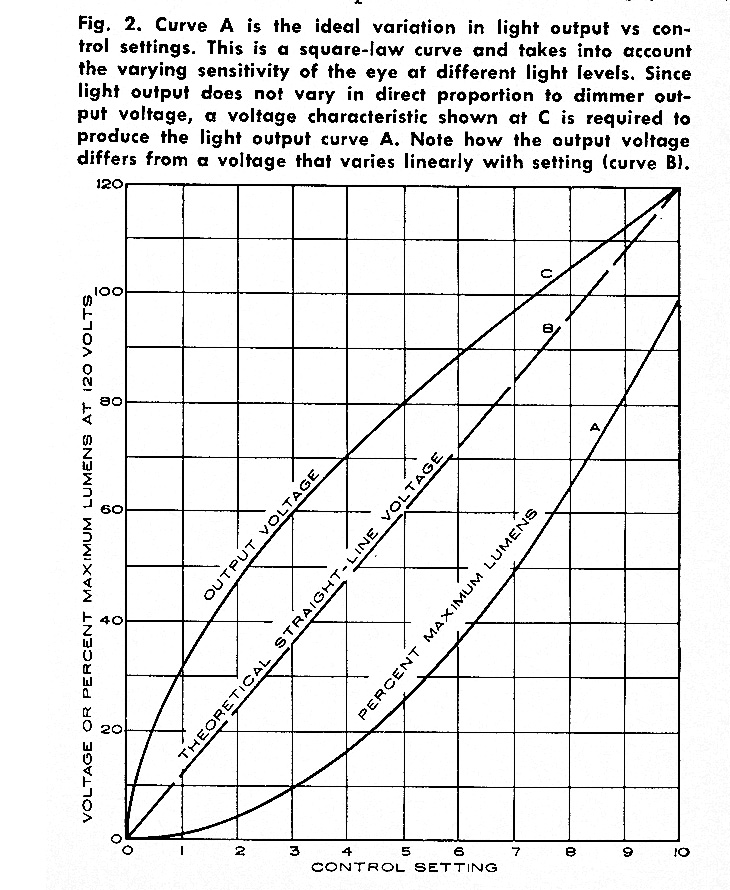|
|
Light bulb dimming seems so simple, but has some interesting problems. First glance at the attached JPG of a chart from a light dimmer article, “Light Dimmers for Home and Industry” by Fred M. Wolff, VP, Engineering and Production, Century Lighting,Inc., pg. 25+, May 1964 Electronics World. An oldie, but goodie. Light output is not linear for voltage (or current for that matter, either.) More info at:
http://members.misty.com/don/bulb1.html
gives the statement, halve the voltage and light goes down by 70%. This reduction has two components, one is that as the temperature of the filament drops, the color peak is shifting away from the peak sensitivity of the eye. So not only is the total wattage dropping (heat), the color is moving into the red region (actually the invisible to the eye, infra-red). Number two, is the problem that the filament has an extremely large TCR (temperature coefficient of resistance.) I.e., from cold to normal operating temperature the resistance may change some 10:1. This is why you can’t just measure the bulb with an ohmmeter, but have to measure current when at operating voltage. But that in turn causes the resistance to lower for lower voltages and if you’re using a series resistor for the control method, more drop to take place across the series resistor than you were expecting.
So, don’t use the tap on 10K resistors, they’re too high in value, and a tapped form is just wasteful of power, use only series resistors and unfortunately, cut-‘n-try is probably your best bet due to all the curves involved. A small reostat of about 1W, 1K, would probably be a good choice to experiment with for a single bulb, or divide the resistance by the number of bulbs in parallel if there are more. Also increase the wattage of the pot approximately proportionally to the number of bulbs divided by 2.
Posted for "Bill Kennedy" <bill_kennedy_3@hotmail.com>:
I wonder if you'd be better off splitting the voltage. For example, put two 10k resisters between 12V and ground, then pick up 6v between the resisters and ground.

LightCurves.jpg
|
|